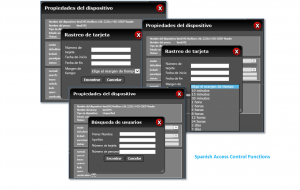Public crisis incidents often occur with little warning, may escalate rapidly, and can have a wide-reaching impact on society for years to come. The global outbreak and spread of the COVID-19 coronavirus, for example, has created significant business challenges for virtually every organization, both public and private.
Amid an unanticipated public crisis, business leaders may find themselves facing some tough decisions. They must act quickly to protect the well-being of their organization’s people, customers and assets; and decisively to manage additional risks to their business’s day-to-day operations.
Converged Security & Information Management, or ‘CSIM’ platforms use technology to facilitate and enhance traditional crisis management strategies. CSIM pulls critical data from disparate security devices and tools across your organization into a single, unified operating picture. This empowers leaders to take effective action to mitigate even the most complex security threats, allowing your business to maintain operational continuity throughout a crisis, and make a faster recovery once the incident is resolved.
Here are five ways a CSIM solution can support business continuity and crisis management efforts before, during and after an incident:
- Providing Situational Awareness and Visualization Capabilities:
CSIM solutions provide a real-time view of macro-level data, allowing operators to monitor multiple, critical information sources such as news media feeds, outbreaks of violence, or illness and severe weather alerts across an area of interest. When coupled with information from connected physical security inputs, such as cameras and sensors, operators gain a complete picture of the evolving security landscape. - Intelligently Managing and Automating Workflows:
Dynamic action response plans, based on either user action or external input, can be configured to automatically trigger actions such as distributing mass communications ( via email, SMS, VoIP, etc.), locking down a facility or dispatching response personnel per the policies and procedures of the organization. - Enabling Remote Operations and Mobile Situation Awareness:
A thin-client CSIM platform, like Vidsys Enterprise, runs on modern web browsers. This provides rapid access to the platform from remote and/or temporary locations as well as for organizational stakeholders who may only need to access the platform during the crisis. - Supporting Organizational Resilience and Business Continuity:
Many CSIM platforms offer support for high availability and disaster recovery measures that help organizations maintain critical functions after an emergency or disruption. - Facilitating Situation Management across Multiple and Disparate Sites:
CSIM platforms that offer global dashboard views with access to events managed by both local and regionally deployed assets give even the largest and most widely dispersed organizations total visibility across their entire enterprise.
Combining a reliable CSIM solution with emergency preparedness and business continuity planning strategies can help organizations both maintain the safety and security of their employees and facilities as the situation continues to unfold and to prepare for a successful return to normalcy.
Want more tips on using converged security for crisis management and recovery? Check out our 4-page guide for organizational leaders and stakeholders.





![Vidsys Enterprise 2020R2: improved video replay controls, auto reporting + more [release notes]](https://vidsys.com/wp-content/uploads/2020/05/Spanish-Access-Control-Functions.png)
